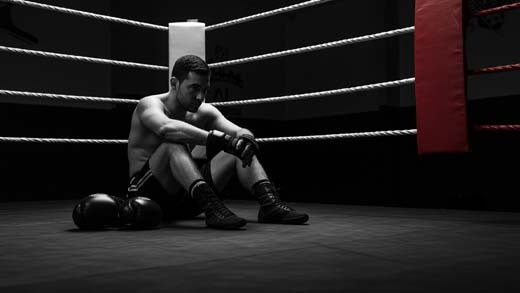Can the weight of your boxing gloves change your entire training outcome? The answer lies in understanding how glove size impacts speed, power, and protection. Whether someone’s goal is precision pad work or controlled sparring, glove choice influences both performance and safety.
They are mainly classified into three types of gloves. Training gloves, sparring gloves, and combat gloves. It's important to match glove features with workout style. The padding density, wrist support, and weight of the glove ascertain whether the gloves are ideal for training or not. Now, let's discuss how one can get the right pair to suit your training needs.
Why Glove Choice Matters
The wrong pair of boxing gloves can affect wrist alignment, punch control, and long-term safety. Most injuries happen not from overuse, but from using the wrong gear for the workout.
Before buying, consider:
-
Type of training (sparring, bag work, mitt work, cardio).
-
Experience level.
-
Hand size and wrist strength.
Even standard boxing glove sizes vary across brands, so relying on general sizing charts alone won’t guarantee the best fit.
Glove Weights and What They Mean
Different glove weights serve different purposes. The most commonly used sizes include:
10 oz gloves
-
Ideal for pad and bag work.
-
Lightweight for speed drills.
-
Minimal padding and less hand protection.
14–16 ounce boxing gloves
-
Often used for sparring.
-
Extra padding protects hands and opponents.
-
Slower but safer for repetitive use.
If you are still in doubt, it is wise to know that recommended boxing gloves for newbies vary between 12 and 16 ounces, depending on body weight and training style.
Match Glove Type to Workout Style
1. Bag Work
Requires dense padding and secure wrist support. Choose smaller gloves (10–12 oz) for better control and faster combinations.
2. Sparring
Use heavier gloves (14–16 oz) with soft padding. They reduce injury risk during partner training and allow for longer sessions.
3. Mitt Work or Technical Training
Go for gloves with snug fits and balanced padding. Helps with form without tiring arms.
Fit and Comfort: More Than Just Size
Many assume the standard boxing gloves size is universal. In reality, it varies by brand, material, and glove style.
Key fit indicators:
-
Fingers should not press against the glove top.
-
Velcro straps or laces should secure the wrist.
-
There should be minimal room for hand wraps inside.
Breathability and interior lining matter too, especially for longer workouts.
Materials and Closure Options
Materials
-
Synthetic leather: Affordable and easy to clean.
-
Genuine leather: Durable but needs care.
-
Foam layering: Varies across models; a multi-layer is more protective.
Closure Types
-
Velcro: Best for solo workouts.
-
Lace-up: Common in competition and professional training.
Velcro is often found in recommended boxing gloves for beginners due to its ease of use.
Common Mistakes to Avoid
Many athletes rush their first purchase without considering longevity or comfort. Here are a few mistakes to steer clear of:
-
Choosing gloves based on looks alone.
-
Ignoring your training type.
-
Skipping hand wraps, which affects glove fit.
-
Picking the wrong size or weight.
Learn more in 5 Mistakes to Avoid When Buying the Best Boxing Gloves for additional guidance.
Summary Table: Quick Glove Selection Guide
|
Workout Type |
Suggested Glove Weight |
Notes |
|
Heavy Bag |
10–12 oz |
Light, fast, minimal padding |
|
Sparring |
14–16 oz |
Heavier, better protection |
|
Pad Work |
10–14 oz |
Balanced speed and support |
|
Cardio Boxing |
8–10 oz |
Ultra-light for movement drills |
Final Thoughts
The best boxing gloves are the ones that match your hands, your level of training, and the kind of workout. However, a relatively large glove may not be sufficient, while a small one may not offer the necessary support. The weight, closure, and material used should be chosen properly to provide safety and operational ability at every punch.
For beginners, sticking to recommended boxing gloves can help ease the learning curve. Those focused on sparring should ensure that they use sixteen-ounce boxing gloves so that they do not end up getting injured. And if quick bag rounds are your specialty, then 10 oz gloves will suit you best.
Whether you are training alone or practicing with a trainer, it is crucial to get the best equipment. Choose gloves that support your goals, and if in doubt, trust proven brands like Sting Sport to deliver comfort, durability, and protection.

